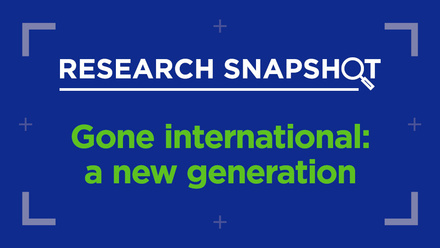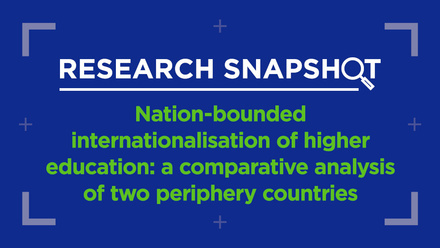Tackling gender inequality in the Japanese job market

Over the past few decades, efforts towards academia-industry cooperation have rapidly intensified in Japan as a reaction to globalisation and various economic and social changes. Higher education institutions have promoted the internationalisation of their systems and curricula in order to foster globally competitive young workers and to revitalise Japan economically.
Over the past few decades, efforts towards academia-industry cooperation have rapidly intensified in Japan as a reaction to globalisation and various economic and social changes. Higher education institutions have promoted the internationalisation of their systems and curricula in order to foster globally competitive young workers and to revitalise Japan economically.
In the marketplace, however, Japan has failed to overcome the long-lasting recession and move into the international field. In addition, young people’s increasingly introverted ways of thinking have been researched in many sociological studies since the start of the century. In a globalised society, who is expected to work actively and globally to revitalise Japan?
Patriarchal society
In the field of labour sociology, one of the emergent problems in globalised marketplaces is how society copes with diversity. Although there are ethnic, linguistic and gender diversities in Japanese society, cultural minorities and women have been marginalised in the public sector, as Japan is a highly patriarchal and male-dominated society.
The Japanese government has implemented several acts in an effort to protect women’s rights and improve gender ratios at work. As a first step, the Equal Employment Opportunity Law was revised in 1997, banning gender discrimination at all stages of employment, such as recruitment, job placement and promotion. In order to improve women’s role in the workplace, a catchy governmental slogan – ‘all women can shine’ – was introduced under the policy packages led by Prime Minister Shinzō Abe in December 2012. However, compared with other countries, it is obvious that the status of women in Japan is still extremely low. The acts and policies do not have a rigorous, legally binding force, such as penalties for companies that hire more men than women.
In the World Economic Forum’s Global Gender Gap Report in December 2019, Japan dropped to 121st of 153 countries
Disappointingly, in the World Economic Forum’s Global Gender Gap Report in December 2019, Japan dropped 11 places to 121st of 153 countries, which is its worst showing since the first report was published in 2006. Looking at the four categories – economic participation and opportunity, political empowerment, educational attainment, and health and survival – the gender gap is particularly obvious in the first two. For instance, women accounted for two-thirds of non-regular workers in 2017, according to the OECD, meaning they were much more likely to be in lower-paid and less secure jobs. Furthermore, the proportion of female ministers in Japan was only 15.8% at the start of 2020. Culturally, it is still common for women to give up regular employment positions after childbirth, since workers who can work long hours are valued and tacitly prioritised in many companies.
Compared with other countries in the Global Gender Gap Report, Japan’s gender gaps in the fields of education and health were much closer to the average. However, gender inequality has also been tacitly and deeply internalised in Japanese educational settings. In 2018, it was revealed that one of the most prestigious Japanese medical universities had been discriminating against women for more than a decade by controlling the pass ratio by applicants’ gender: entrance exam scores had been manipulated to ensure that more male applicants were selected as students.
Diversity in international education
Women do, however, tend to form the majority in the field of internationalisation of education: most universities in Japan, except for the elite, have more female students in departments with ‘international’ and ‘global’ in their titles. In addition, the number of women studying abroad in English-speaking countries has outstripped the number of men over several decades. Despite this, women have again been tacitly marginalised and Japanese men have been targeted as hegemonic leaders in governmental policies to promote outbound mobility.
Women do, however, tend to form the majority in the field of internationalisation of education
For instance, the concept of global jinzai (globally competitive personnel) has flourished in the Tobitate programme, which was launched in 2014 to send 120,000 students abroad by 2020. While no concrete definition of global jinzai was provided, and it was not made clear what employability skills were required when the concept was first introduced, three significant characteristics of global jinzai were described in an interim report of the Council on Promotion of Human Resources for Globalization Development in 2011. Understanding different cultures and having a sense of Japanese identity were among those. In the report, Japanese identity is described using militant words such as “strategies”, “mission” and “national”. There is a paradox here in the coexistence of two opposing parts of the global jinzai concept: ‘global’, which seems to welcome multiculturalism; and ‘Japanese identity’, which hints at nationalism.
In the report, there is no mention of economic and social disparity between men and women at all, despite the substantial gender gap in Japanese society in terms of economic participation and political empowerment. Given the absence of any mention of gender disparity in an initiative aimed at creating a globalised and outward-looking workforce, it is hard not to view the concept of global jinzai as being highly masculine and lacking in diversity.
Critical thinking
Around 10 years have passed since the concept of global jinzai emerged. Regarding this concept as an ideal in workforce development, higher education has introduced it into careers education without incorporating critical views on gender issues. Although the proportion of Japanese universities holding classes related to careers increased to 96.9%, in the academic year 2015–2016, only 33% of those classes included topics regarding gender.
Promoting gender equality is an urgent issue for Japan to address, with the aim of placing Japanese society and education on a level playing field in a globalised society, where a variety of people can work together. A male-dominated society does not allow for sufficient diversity. It is important for all students to recognise the substantial gender gap in Japanese society before starting their working lives. It is therefore our responsibility as educators to provide all students with sufficient opportunities to think critically about the relationship between employability and a diverse society.






